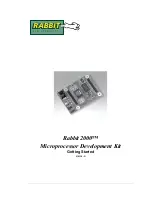
Intel
®
Pentium
®
4 Processor on
90 nm Process in the 775–Land
LGA Package
Thermal and Mechanical Design Guidelines
Supporting Intel
®
Pentium
®
4 Processor 5xx and 6xx Sequences in
the 775-land LGA Package and Intel
®
Pentium
®
4 Processor
Extreme Edition in the 775-land LGA Package
November 2005
Document Number:
302553-004
R
Summary of Contents for 640 - Pentium 4 640 3.2GHz 800MHz 2MB Socket 775 CPU
Page 14: ...Introduction R 14 Thermal Mechanical Design Guide ...
Page 38: ...Thermal Management Logic and Thermal Monitor Feature R 38 Thermal Mechanical Design Guide ...
Page 52: ...Intel Thermal Mechanical Reference Design Information R 52 Thermal Mechanical Design Guide ...
Page 60: ...Acoustic Fan Speed Control R 60 Thermal Mechanical Design Guide ...
Page 72: ...Heatsink Clip Load Metrology R 72 Thermal Mechanical Design Guide ...
Page 99: ...Mechanical Drawings R Thermal Mechanical Design Guide 99 Figure 50 Reference Fastener Sheet 1 ...
Page 103: ...Mechanical Drawings R Thermal Mechanical Design Guide 103 Figure 54 Clip Heatsink Assembly ...

































